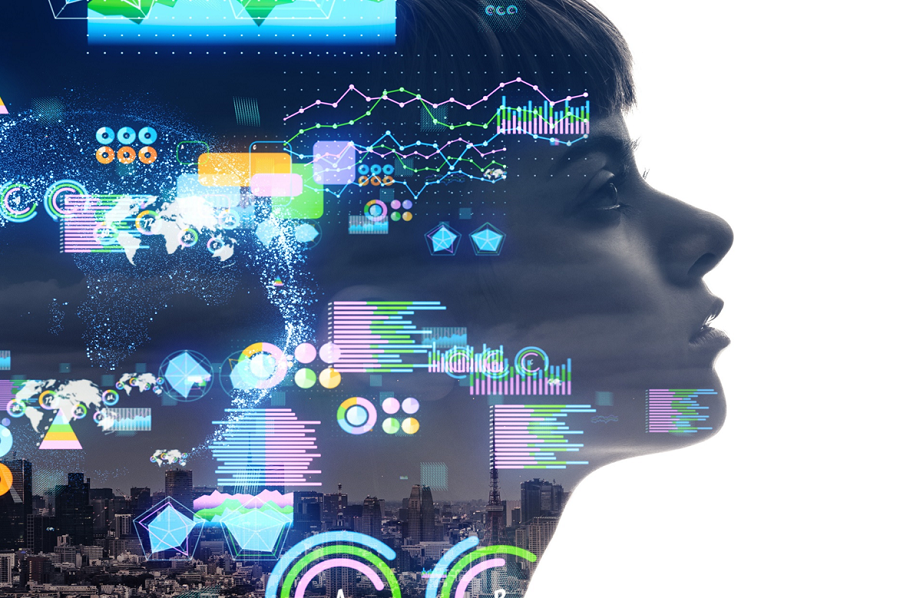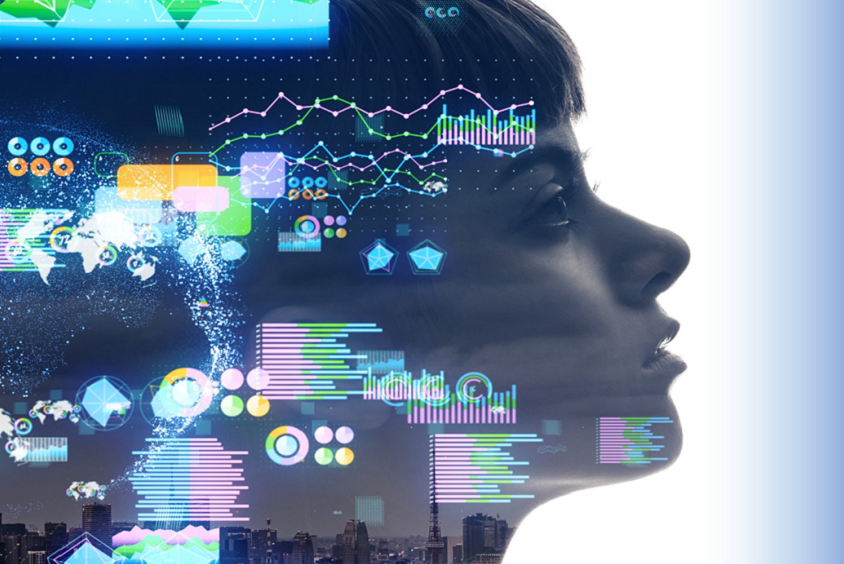
Anyone who visited the airport must have experienced passing the luggage through the large X-ray scanner. Have you ever wondered how the security agent detect explosives and dangerous items so quickly as thousands of bags passes through the scanner?
You might have assumed that some kind of artificial intelligence technology is applied to automatically filter out prohibited belongings, but the detection process still relies on human eyes. It only takes about 3 to 4 seconds for the experienced security agent to filter out dangerous items, however, there still exists a possibility of human error that could lead to serious problems.
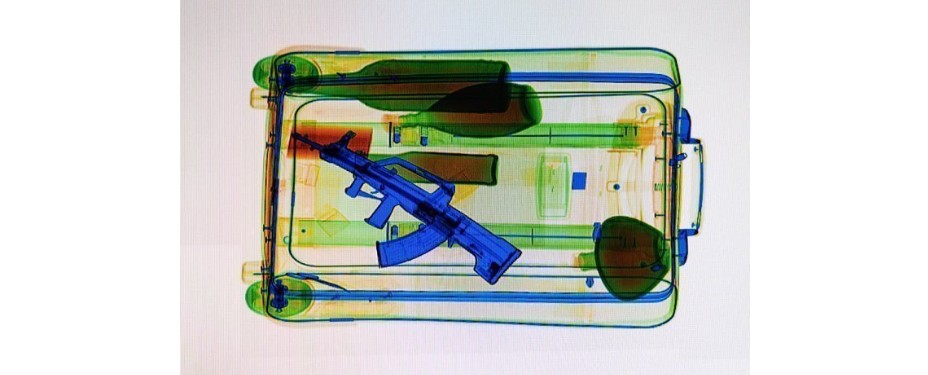
The commercially applied X-ray scanner only distinguishes and provide images with 3 to 6 different colors based on the material component like metal, liquid, and etc.
However, the equipment that can analyze luggage images and provide alarm for any prohibited items is about to be applied in the airports. For example, if the equipment detects a gun image in the luggage like the picture above, it will alert the security agent to take actions. Thanks to the advanced technologies, we will be able to enjoy our trips more securely.
Google Photo that searches the right photo for you
Visual recognition technology can be found in our daily lives as well. Anyone who likes taking photos with their smartphones may be more familiar with the Google Photo service which provides useful classification and search functions.

If you want to search for the photos taken in certain location or photos of a specific person, you can easily find the photo you want in the albums that are automatically created by the Google Photo. Even if you want to find a photo you took with a dog or an umbrella, you can type in keywords like ‘dog’ or ‘umbrella’ and Google Photo will search the photo for you.
Such services to find related images has been around us for many years now, but many people are still unfamiliar with it.
Healthcare service that analyze images to predict diseases
Lung cancer, a disease that causes high mortality rate, is found to have a low survival rate of 6.1% when detected at its later stages, but the survival rate increases to 64% when it is detected during its early stage. However, early diagnosis rate of lung cancer is only 20.7% in Korea because it is hard to detect lung cancer with X-ray images when the lesion is small or when it is covered by other organs.
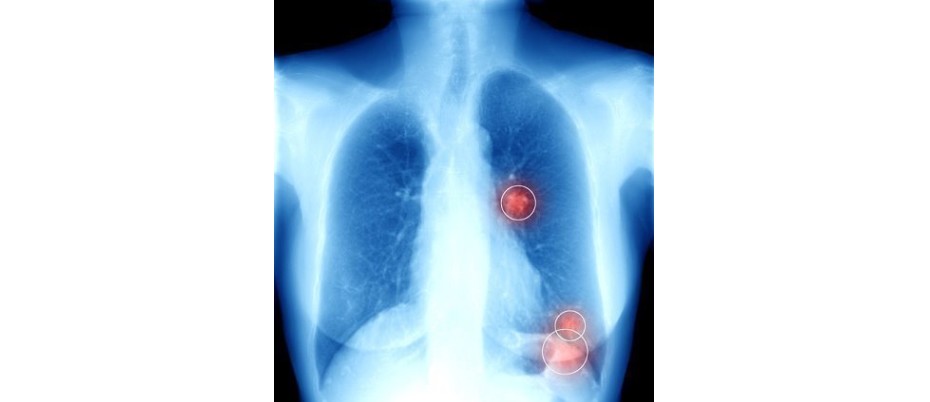
Healthcare startups in Korea are launching image analysis services to solve such problems. The image analytics engine that learnt CT scan results have detected pulmonary nodules with 97% accuracy rate and the study has proved that the doctors’ reading accuracy increases 20% when supported by the image analysis service.
The application of such technology is expanding to other diseases like breast cancer and biopsy, and major hospitals in Korea have already adopted the technology.
ology.
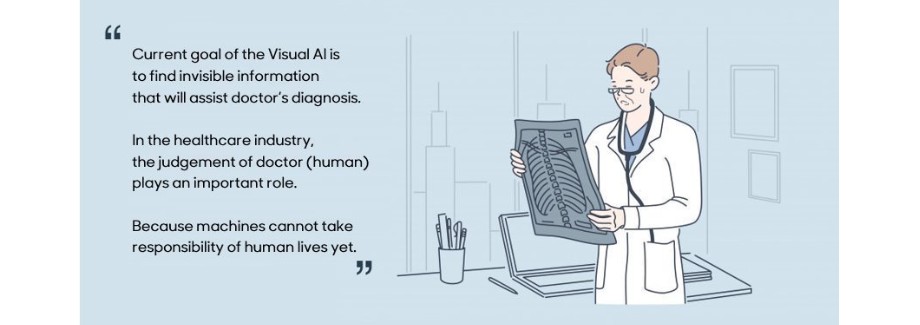 Current goal of the visual ai is to find invisible information that will assist doctor's diagnosis.
Current goal of the visual ai is to find invisible information that will assist doctor's diagnosis.
In the healthcare industry, the judgement of doctor (human) plays an important role.
Because machines cannot take responsibility of human lives yet.
Challenge still remains to filter out fake news and videos
Have you heard of Deepfake? It is a term derived from ‘deep learning’ and ‘fake’, referring to fake video or image that appears to be real. It is a technology based on artificial intelligence to create video that is hard to distinguish from the real ones. Recently, a video that virtualized former US President, Barack Obama, was uploaded on YouTube (https://www.youtube.com/watch?v=AmUC4m6w1wo) as well.
Such Deepfake technology can be used create fake news to disseminate malicious images of celebrities, create chaos among the citizens, or can be abused for political purposes.
In response to growing manipulation skills, technology for screening the image authenticity is also receiving a lot of attention recently.
The visual analytics technology is also being developed into the field of preventing forgeries. But for the time being, I will stick to ‘only believe what you see’. Machines are there to help, but the judgement is entirely up to the human.
By Andy Cho principal Professional_Development Competency Office
-
#Visual AI #Andy Cho #SAMSUNG SDS #NEWSROOM
- CES 2025 Through the Eyes of a Samsung SDS Digital Marketer!
- An Agile Approach, the Core of Corporate DT for Working Culture Innovation
- Digital ESG, a Critical Success Factor for ESG
- Conversational AI War Begins. Who Will Be the Winner?
- What Is Matter, the New Smart Home Standard?
- 2023 Forecast for Technology Trends
